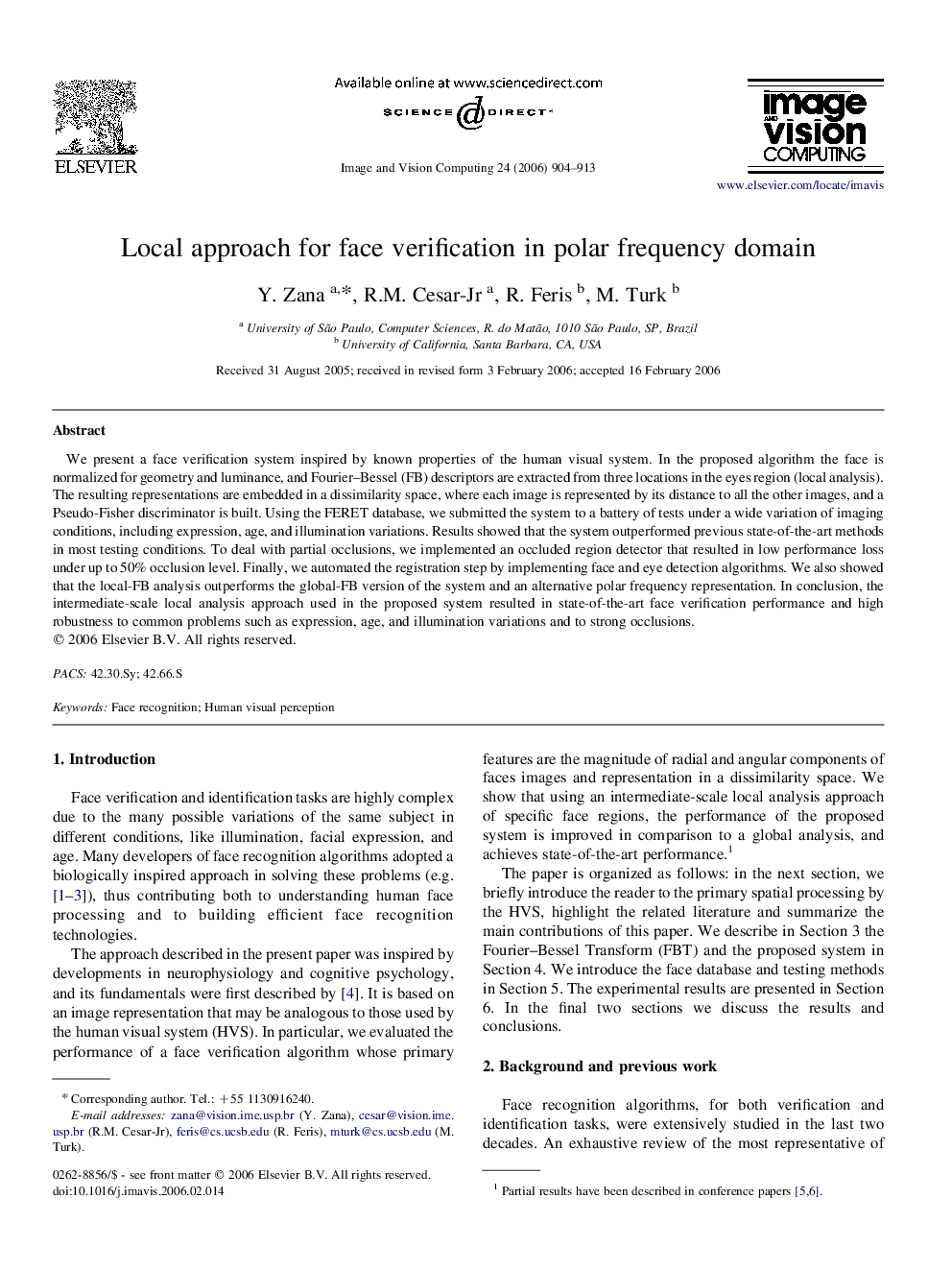| Article ID | Journal | Published Year | Pages | File Type |
|---|---|---|---|---|
| 527678 | Image and Vision Computing | 2006 | 10 Pages |
We present a face verification system inspired by known properties of the human visual system. In the proposed algorithm the face is normalized for geometry and luminance, and Fourier–Bessel (FB) descriptors are extracted from three locations in the eyes region (local analysis). The resulting representations are embedded in a dissimilarity space, where each image is represented by its distance to all the other images, and a Pseudo-Fisher discriminator is built. Using the FERET database, we submitted the system to a battery of tests under a wide variation of imaging conditions, including expression, age, and illumination variations. Results showed that the system outperformed previous state-of-the-art methods in most testing conditions. To deal with partial occlusions, we implemented an occluded region detector that resulted in low performance loss under up to 50% occlusion level. Finally, we automated the registration step by implementing face and eye detection algorithms. We also showed that the local-FB analysis outperforms the global-FB version of the system and an alternative polar frequency representation. In conclusion, the intermediate-scale local analysis approach used in the proposed system resulted in state-of-the-art face verification performance and high robustness to common problems such as expression, age, and illumination variations and to strong occlusions.
